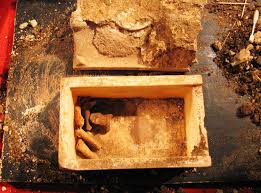 |
| Jesus? |
Recently, Facebook friends have been arguing over the
conjectured physical appearance of Jesus. That’s just the latest
disagreement over Jesus’ looks.
Around 2001, a group of researchers, using the most modern techniques,
were lambasted after deriving an image of a short, stocky man with a broad nose
and dark skin. In 2013, Megyn Kelly, then a FOX commentator, insisted Jesus
(and Santa Claus) was white, igniting the discussion again. The fire she
started continues to send out flames.
Some Facebook friends were adamant that Jesus was blonde or
Western appearing. You would certainly think so, given the statues and
paintings which depict a tall white Jesus with flowing hair. I don’t
recall ever seeing a black Jesus in all the physical manifestations on
Christmas cards, drawings and the like.
In movies, such as The Passion of The Christ (2004),
Jesus is white, played by Jim Caviezel.
However, that’s not how early Christians described
him. Like us, they had no sources. No one in Jesus’ lifetime left
us a physical description. Religious leaders tried anyway.
Celsus, a Greek philosopher who opposed Christianity and
lived in the 2nd century, described Jesus as “small and ugly.”
Tertullian, an early Church Father who was later declared a heretic, agreed
with Celsus. Jesus, Tertillian said, had an “ignoble” appearance.
Irenaeus, another 2nd century Church founder who was the first to
list all the books eventually in the New Testament, called Jesus “weak and
inglorious.” Others said he was a hunch-back.
In the Acts of Peter, which is not in the Bible, Jesus was
called “small and ignorant.” How small? Bishops in the second century and
Ephrem Syrus, a fourth century bishop, suggested Jesus was closer to 4’6”
tall.
Later writers, like St. Augustine insisted Jesus was
beautiful.
If they had looked at the Bible for suggestions, they would
have concluded Jesus was dark-skinned. After all, the first human in the
sacred text, Adam, was formed from clay. In Hebrew, the word for “clay”
or “dust” is defined as black or very dark brown in color.
Ethiopians, who are black, populate the stories.
Moses’ wife Zipporah is an Ethiopian. So are additional wives of Abraham
and Jacob. In movies and paintings, they are usually depicted as white.
The idea that Jesus was fair skinned arose in the Middle
Ages as Christians began to battle with Arabs for control of the Middle
East. Depicting Jesus as non-Semitic was a form of propaganda. It
also separated Jesus from his Jewish origins as Jews were increasingly
brutalized in Europe.
In the 19th century, Christian scholars continued
to say Jesus was white during an era of intense anti-Semitism, leading to the
Nazis and the Holocaust.
English-born German philosopher Houston Stewart Chamberlain
initiated the process by describing Jesus as Amorite-German, apparently unaware
that the Amorites were Semitic, like the Jews. New Yorker Madison Grant,
known for his work with the pseudoscience of eugenics, insisted Jesus was
Nordic.
That argument is based on the false premise that Galilee,
where Jesus lived, was a non-Jewish region. In reality, the region was
once called Samaria and contained mostly Jews and converts to Judaism.
In the late 20th century, scholarship swung back
toward a swarthy Jesus, if not black. Researchers checking skeletal
remains from the era found that residents of Judea, then part of the Roman
Empire, shared DNA largely with today’s Iraqi Jews. Those folks mostly
have olive skin, dark hair and brown eyes. The men average about
5’5”. If Jesus followed the practices of his male counterparts, he would
have had short hair and a trimmed beard.
The bigger question is: Does it matter?
You’d better believe it. Although some Christians
insist they have no problem with whatever Jesus really looked like since they
believe in him regardless, most Facebook posts did not follow that
reasoning. White Christians want Jesus to look like them, so he gets blue
eyes, flowing hair and white skin.
Would
they pray to in a black, short, Semitic-looking man? I doubt it.
Such thinking would undermine the inherent racism embedded so deeply into
Western culture. A black president outraged enough people; a black Jesus,
openly replacing the white version, would likely cause even more anger.
Nevertheless, in time, maybe the truth will win out.
As author Mark Wayne suggested, “We would go back to …
following a humble dark-skinned Jewish rabbi who just so happened to be the
physical manifestation of God himself to bestow grace and mercy to the whole
world. All colors included.”
Long-time
religious historian Bill Lazarus regularly writes about religion and religious
history with an occasional foray into American culture. He holds an ABD
in American Studies from Case Western Reserve University. He also
speaks at various religious organizations throughout Florida. You can
reach him at wplazarus@aol.com. He is the author of novels and nonfiction
books, such as The Gospel Truth: Where
Did the Gospel Writers Get Their Information; Noel: The Lore and Tradition of Christmas Carols; and Dummies Guide to Comparative Religion.
His books are available on Amazon.com, Kindle, bookstores and via various
publishers, including Bold Venture Press. His website is wlazarus.com.




